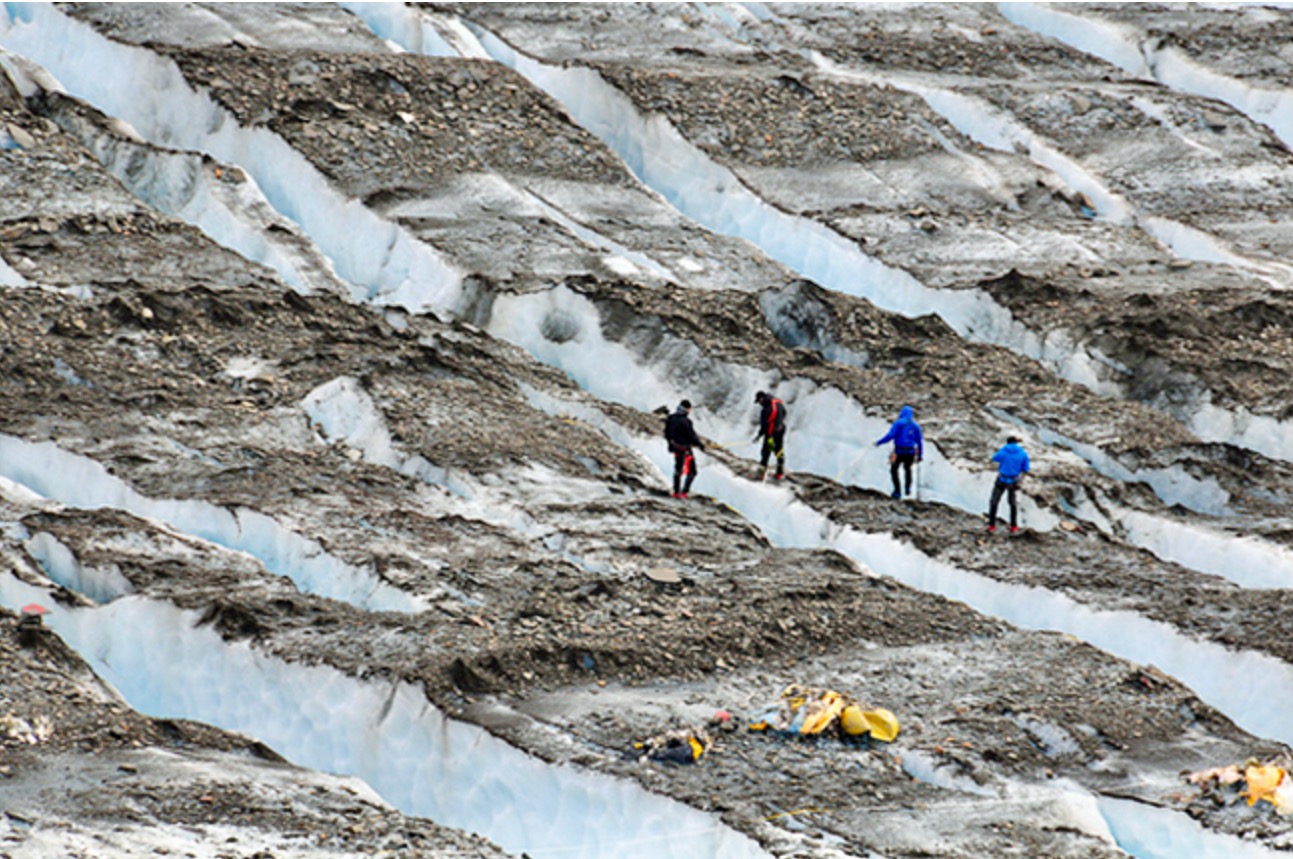
Ancient Viruses Emerge from Nature’s Deepfreeze
William A. Liggett — Mar 16, 2020
What happens when living organisms are frozen in ice or permafrost? They are preserved, much like the meat or vegetables in your freezer at home, and they can often remain intact for decades or centuries. I was surprised to learn while doing research for my cli-fi novel, Watermelon Snow, that ancient frozen viruses are still viable 30,000 years later.
Earth’s freezer, or cryosphere, is huge and “includes solid precipitation, snow, sea ice, lake and river ice, icebergs, glaciers and ice caps, ice sheets and ice shelves, and permafrost and seasonally frozen ground.” Among many other things, the cryosphere functions as a deepfreeze preserving plants and animals of all kinds.
The accelerating pace of global warming this century caused significant melting of snow and ice all over the planet. When frozen organisms including humans melt from their icy surroundings, they can provide valuable information about the world at the time when they were living. It’s like opening a time capsule. The Ötzi Iceman I described in my last blog is a striking example of what can be gleaned from the study of a prehistoric body and its associated artifacts. I promised at the end of that article to describe other things that have recently emerged from melting glaciers or permafrost around the world. Here is a partial list:
- Researchers found that a 30,000-year-old virus trapped in permafrost was viable enough to infect amoeba.
- Thirty-three virus types were found in 15,000-year-old ice cores taken from the Tibetan Plateau; 28 were new to science.
- In a 2005 study, NASA scientists successfully revived bacteria that had been encased in a frozen pond in Alaska for 32,000 years.
- A 46,000-year-old frozen bird carcass discovered in northeast Siberia is helping scientists better understand how the ecosystem evolved at the end of the last ice age.
- Lyuba, the best-preserved mammoth mummy in the world, is a female woolly mammoth calf who died 41,800 years ago at the age of 30 to 35 days.
- Melting glaciers in the Argentinian Andes have relinquished their grip on Incan children sacrificed five hundred years ago.
- The remains of 17 service members who died in a 1952 plane crash have been identified after an Alaska National Guard Blackhawk helicopter crew discovered the site.
- In 1999 Conrad Anker found the body of George Mallory, the famed mountaineer and explorer who disappeared while climbing Mount Everest in 1924.
- A group of glacial archaeologists have recovered over 2,000 artifacts from the edges of Norway’s glaciers, including a 1,500-year-old iron arrowhead alongside its arrow shaft and one of the feathers from the fletching.
Some of these discoveries are of particular value to paleontologists who study ancient life. Others fall into the domain of archeologists studying prehistoric civilizations. The identification of the bodies of those killed more recently in plane crashes are especially meaningful to relatives who welcome the closure they provide. One could conclude that the melting cryosphere has been a boon to human knowledge.
However, people concerned about public health worry that bacteria and viruses may emerge for which humanity has had no prior exposure and no immunity. This concern seems justified now that the world struggles to cope with the pandemic caused by the previously unknown COVID-19 virus. Also, the accelerating pace with which we are losing the cryosphere means that some rare specimens may decay before they can be identified and studied. The natural beauty and majesty of the ice sheets and glaciers of this world, not to mention the fresh water storage, will be missed by many if they disappear altogether.
We cannot say, therefore, that the relentless shrinking of the cryosphere is altogether good or bad. It is merely the result of a warming planet, which has serious negative consequences for humanity’s future.
Will the world respond to the current coronavirus outbreak by preparing for the next pandemic, which could come from novel viruses emerging from glaciers after they’ve been frozen for thousands of years? Do we only miss glaciers that are disappearing in our lifetime and not ones that were gone before we were born? Since humans are largely responsible for global warming, should we feel responsible for the harm it is causing to other species and our environment?
[Featured Image: Search teams retrieving debris in 2012 from a plane that crashed in 1952 on a glacier in Alaska. (Photo courtesy DoD/Cpt. Jamie D. Dobson, U.S. Army)]
Bill Liggett writes fiction that blends behavioral and earth sciences in the new literary genre “cli-fi,” or climate fiction. In Watermelon Snow, his first novel, a long-frozen virus melts from a glacier, threatening a pandemic. His second novel, Panic Peak, (in process) entails a plot to geoengineer the earth’s climate. The planned third novel in the trilogy paints a hopeful future, based on solutions to global warming.
Previous Post: The Ötzi Iceman: Praise for N-of-1
Next Post: Todd Sanford – Climate Scientist
Hello Bill,
I am very glad to discover you, a fellow climate writer from Stanford. I like your emphasis on what an individual person can do about the Climate Crisis. We are both teachers, so we care about the young people, and try to guide them in a positive direction.
I will take a closer look at your blogs and books. Thank you, Bill, for your excellent work.
Cordially, John Slade
PhD in literature, Stanford, 1974.